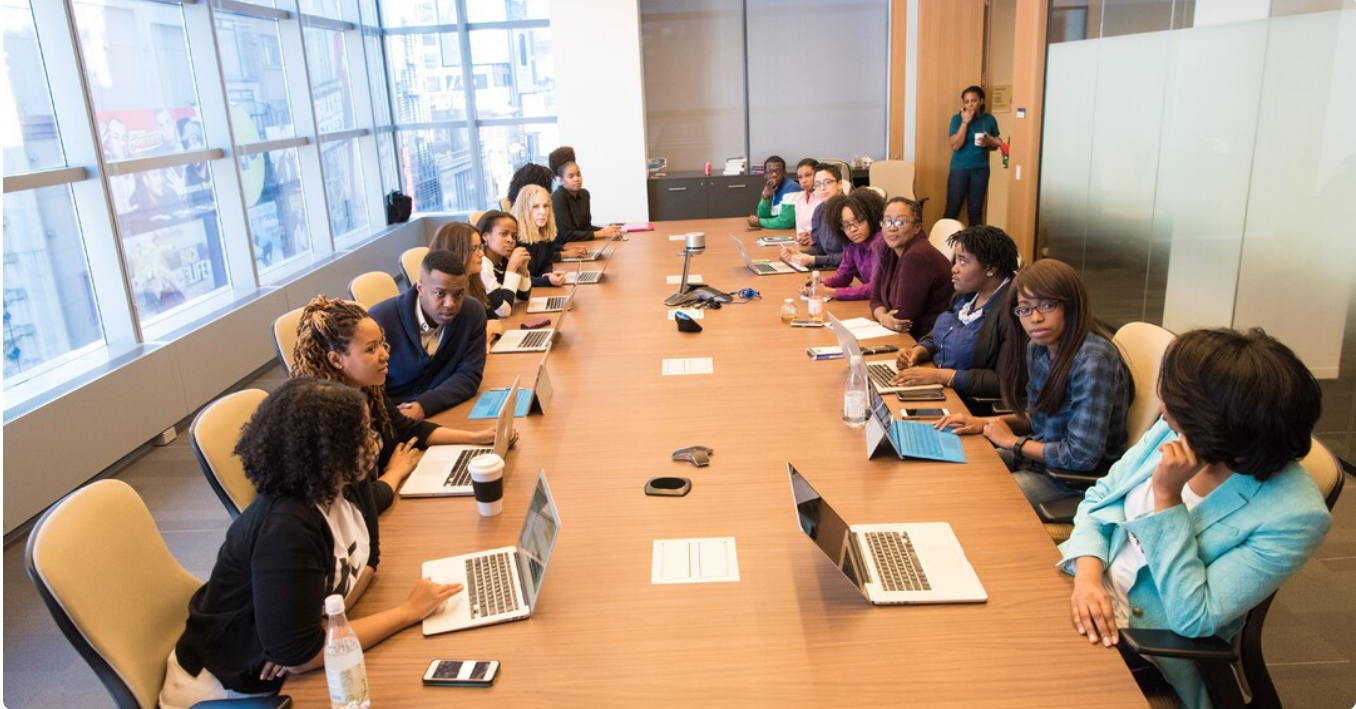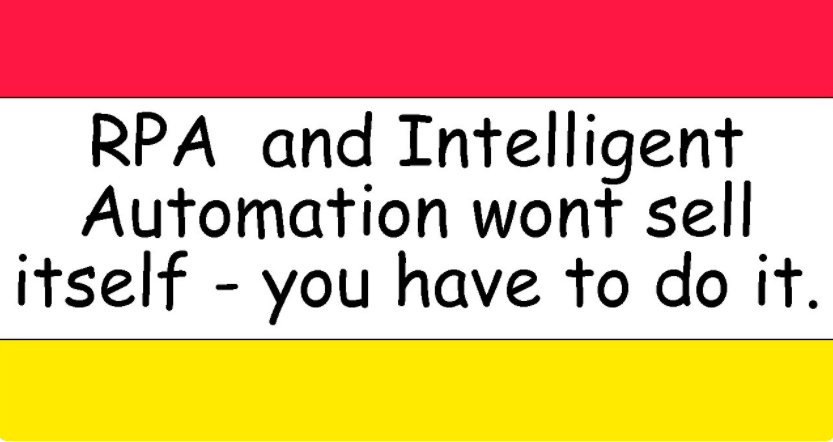F is for – Front office | Future of Work | Fear of Change | Fail Fast | Faster | Fundamentals | Flexibility | Federated | Factory
Welcome to the sixth part of our 26 part series charting the A – Z of Robotic Process Automation (RPA), Intelligent Automation (IA) and Digital Transformation (DT). Having already looked at the letters A, B, C, D and E, today’s letter is the letter F.
Front office. Historically, Robotic Process Automation (RPA) and intelligent automation (IA) have seen significant success in the back and middle office. Industry leaders automate end-to-end operations, to create more friction-less end-to-end customer and staff journeys. RPA can work to move data at any point of the customer journey; the key is to ensure it is used at the correct point of the journey.
“Businesses can achieve a higher quality of customer service by creating a 360 automation cycle. While automating the back office and easing the burden of repetitive tasks, using RPA for front office processes will empower the customer services. This is an easy shortcut to productivity and efficiency and definitely what the future holds.”
Hazal Beegan; Head of RPA Projects
Future of work. The future of work is now. Industry 4.0 has happened. Indeed The Prime Minsters Office of Japan are talking about Society 5.0 (i.e. developing an understanding of how machines and human beings can coexist to support human kind live their very best lives). Leaps in technology, cloud computing power, AI and machine learning have unleashed significant opportunities for how we do business in a digital layered society.
Video 1: Why Society 5.0 | Yuok Harayama. Source: TEDx
Whilst many try and predict the future of work, the fact that a substantial proportion of future jobs will be hard to predict. What we can be certain of is the fact that they will require a very different range of skills than that displayed by most workers today.
The future potential of an organisation will depend on its workforce’s ability to cultivate ‘learnability’. In today’s digital-first world we need to teach every generation how to learn, unlearn, and relearn quickly so they can transform the future of work, rather than be transformed by it. Organisations need to select, nurture and reward ‘smart creatives’ (i.e. highly intelligent, ‘learning animals‘ who possess an innate ability to ask insightful questions, that have the power to unlock deeper insights and can routinely innovation)
- Learning Animals – How Google Works (The New York Times)
- It’s the Company’s Job to Help Employees Learn (HBR)
- 6 Reasons Why Higher Education Needs to Be Disrupted (HBR)
- The Learning Organisation 4.0 Humans Re-purposed (Ade McCormack)
“As we enter the 4th Industrial Revolution, as coined by the World Economic Forum, it is essential that humans embrace the augmentation that Automation (from various forms) brings to our every day life, including the workplace. Finally humans can stop pretending to be machines and focus on what they do best – to be human again. This will undoubtedly change company structures and the way we all work as automation takes care of the more mundane, repetitive but high volume tasks we are not biologically best suited for.”
Danilo McGarry – Automation international thought leader
Future. Digital transformation is not about looking to the past. It is about looking to the future. Firms need to use the amazing opportunity presented by digital technology, AI and cloud computing to re-imagine how value is delivered. Firms should not just make their current processes faster but create a brighter, better digital future for their customers and teams.
Fear of Change. One certainty in our digitally disrupted global economy is that change is certain to happen. Technology has issued an era of creative destruction which Schumpeter would be proud. Digital leaders embrace and drive change in their industries. Digital laggards run the risk of becoming disrupted by technology.
“Most of your business will not be prepared for or be comfortable with your direction of travel. People fear change, so make sure you understand what it is they value and are protecting. Share your goals, find people that believe in them, influence the influencers and inspire and encourage people to engage and help. Importantly, ensure you listen to, but be prepared to ignore your detractors; winning them over is not the outcome you are trying to achieve – the success and value delivered should eventually win them over – so don’t divert energy from this.”
Paul Arnold, Head of Product and Development at Cortex Intelligent Automation
Fail fast. Rapid experimentation and speed of execution are key to a firms success in the digital era. Organisations can now afford to fail fast. Pre-cloud, organisations would telephone order a server and then wait six weeks or more to arrive (all while hoping bits were not missing!). Today it costs dollars to spin up a server and then hours to build an entire eCommerce site. If the eCommerce site does not work then they can shut it down. Site cost, cost gone. Organisations that can successfully build operating models and cultures that marry to this new ‘fail fast’ way or working, will win in the digital age.
“In a PEX Network survey, 90 per cent of respondents said that innovation was integral to business success. Innovation means that you try new things, and sometimes those new things fail. If you’re going to fail (and you will), fail fast, otherwise you’re throwing good time energy and money after bad.”
Ian Hawkins, Editor, PEX Network
Fundamentals. Few organisations have the benefit of being born digital. The journey to digital is bump and requires lots of learning and quite often a log of time and cost. Whilst the destination is never ending the journey is worthwhile and should not be ignored. For example, organisations that have built chatbots, get to newly examine their business processes and developer greater understanding of the conversations customers wish to have with them. Getting continued insights into what customers want and reacting to that in real time (using real or near time analytics) is a valuable process that helps direct the organisation toward the future.
Video 2: Building an Azure Chatbot with Azure Cognitive Services. Source: CloudAcademy
Flexibility. As organisations grow they create structures that allow them to operate efficiently from the inside out. Overtime this can lead organisations to become distracted from their customers as they seek to optimise their operations as opposed to optimising the way they engage with their customers (i.e. from the outside in).
A robust operational backbone is key to large, global organisations working effectively (think standardised accounting or HR system). However, a dynamic, component based digital platform is key to delivering and pivoting rapidly in line with ever changing customer and market needs. APIs | RPA can be used to connect the digital and operational backbones to provide the resilience and agility needed to compete in this digitally driven era.
An exceptional book that describes this model is ‘Designed for Digital. How to architect Your Business for Sustained Success‘. (Source: Amazon.co.uk)
Federated. When organisations implement RPA | IA | AI | digital programs they often setup centres of excellence or expertise (CoE). That way they centralise best practices whilst, minimising duplication of effort and cost. Based on the culture of the organisation, the way people work, the geographical nature of operations and the availability of funds this works well. A centralised model that refines standards, governs work in line with strategic intent and delivers value from the core has many obvious benefits.The CoE provides a focal point for resources and governance, ensuring the enterprise adopts a consistent methodology and technological approach.
One potential weakness of a centralised model is the distance that grows over time between those in the middle and those working with it’s customers on the edges of an organisation. To gain buy-in and proximity to those who run processes organisations often choose to distribute resources to work within business functions or geographies. This not only provides an accelerated and scalable delivery model, it ensures that the business areas themselves (where the process knowledge and business expertise reside) have a vested interest in, and hands-on experience of, implementing RPA into their own area.

“Different organisations will need to setup their centres of expertise that best suit their way of working to deliver the very best results on offer to them. Organisations often choose to setup their CoE in one way and migrate over time to another as their automation journey progresses. “
Gourav Datta, RPA and Intelligent Automation Delivery Lead
Factory. In order to digitise and transform at scale; organisations need to build an industrial sized intelligent automation factory. Layers, upon layers of digital components need to be easily assembled, de-assembled and re-assembled. Layers of intelligent automation building blocks need to come off a production line at digital speed to meet customers individualised and personalised needs when and as they want product. Organisations that scale digitally, using analytics, intelligent automation and expert people where they add most value will scale economically too.
“We should imagine the automation program as a factory. A lot of opportunities will come into the factory but not all of them will proceed to the next stage of the life-cycle.”
Konstantinos Vogiatzakis, Global RPA Lead at Babylon Health
This article highlighted a lot of things relating to intelligent automation and digital transformation beginning with the letter ‘F‘. There are many F‘s organisations need to consider but what F do you think is the most important?
If you like this article then you may find these useful too.
- How to build a business case for Intelligent Automation and Robotic Process Automation
- 30 ways to build a pipeline of processes suitable for Robotic Process Automation (RPA) and Intelligent Automation (IA)
- I’ve met 100+ RPA developers but these are the 15 signs of an ‘exceptional’ RPA developer!
- 8 questions to ask to ensure you select the ‘right’ processes to automate using RPA | IA.
- 14 rules for Robotic Process Automation (RPA) and Intelligent Automation (AI) success
- The A-Z of Robotic Process Automation, Intelligent Automation and Digital Transformation
- 8 Key Roles in Your RPA Centre of Expertise
- 14 rules for Robotic Process Automation (RPA) and Intelligent Automation (AI) success
- If you are not willing to go all in, then don’t put on your RPA swimsuit.
- The biggest lie told to RPA customers – 50 robots equals success
- 40 essential selection criteria to choose an RPA platform
If this could benefit someone else tag them and share this.
Free to reuse: We are a community of RPA and Intelligent Automation experts with years of real world experience. We have stories to tell and the scars to show for it. We share our collective wisdom for free to simply provide as much value as we can to you. Therefore, if you want to post this article on your LinkedIn page then please feel free to do so. The more information we share within the RPA community the more likely businesses are to succeed with this excellent technology.
Further Help: If I can help you in any way please do reach out.
Note: Note: The views expressed above are our views and not those of my employer or the employers of the contributing experts.









Leave a Reply